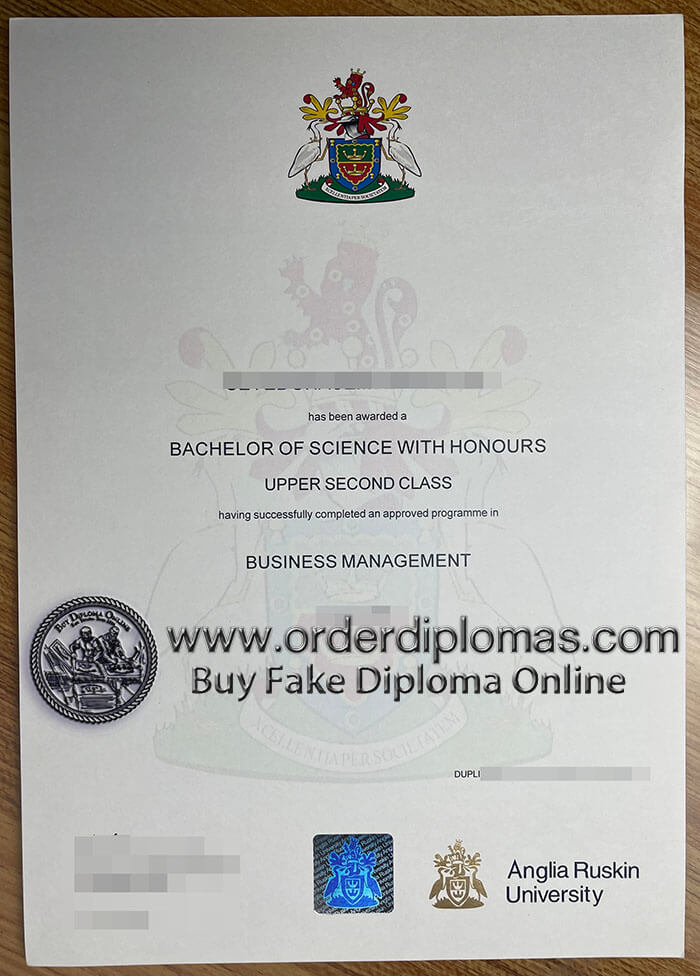
buy fake anglia ruskin university degree
How to buy a fake anglia ruskin university diploma? how to buy a fake anglia ruskin university degree? how to buy a fake anglia ruskin university certificate? buy fake anglia ruskin university diploma. buy fake anglia ruskin university degree. buy fake diploma. buy fake degree.
Anglia Ruskin University (ARU) is a university in East Anglia, United Kingdom. Its origins are in the Cambridge School of Art, founded by William John Beamont in 1858. It became a university in 1992 and was renamed after John Ruskin in 2005. It is one of the “post-1992 universities”.
Anglia Ruskin has 39,400 students worldwide with campuses in Cambridge, Chelmsford, Peterborough and London. It shares further campuses with the College of West Anglia in King’s Lynn, Wisbech and Cambridge and has partnerships with universities around the world including Berlin, Budapest, Trinidad, Singapore and Kuala Lumpur. There are four faculties of study at the university: Faculty of Business and Law, Faculty of Arts, Humanities & Social Sciences, Faculty of Health, Education, Medicine & Social Care and Faculty of Science & Engineering. The university’s Lord Ashcroft International Business School (LAIBS) in Cambridge and Chelmsford is one of the largest business schools in the East of England. In 2019, the School of Medicine was formally opened at its Chelmsford campus by Prince Edward, Duke of Kent. It was awarded Entrepreneurial University of the Year in the 2014 Times Higher Education Awards. It won the Duke of York Award for University Entrepreneurship at the Lloyds Bank National Business Awards 2016.
Anglia Ruskin University has its origins in the Cambridge School of Art, founded by William John Beamont in 1858. The inaugural address was given by John Ruskin (often incorrectly described as the founder; in fact he founded the Ruskin School of Drawing in Oxford). The original location was near Sidney Sussex College, later moving to its present location in East Road, Cambridge. The governing body in the 1920s included two remarkable pioneers in the civic history of Cambridge, Clara Dorothea Rackham and Lilian Mellish Clarke after whom buildings on the East Road campus were later named. In 1960 this became the Cambridgeshire College of Arts and Technology (CCAT) In 1989 CCAT merged with the Essex Institute of Higher Education, which was originally a vocational school named Chelmsford School of Science and Art and was later known as Mid Essex Technical College and Chelmer Institute of Higher Education, to form the Anglia Higher Education College. The merged college became a polytechnic in 1991, using the name Anglia Polytechnic, and was then awarded university status in 1992. buy fake diploma. buy fake degree. buy fake certificate.
Initially Anglia Polytechnic University (APU), it retained the word ‘polytechnic’ in its title because “the term ‘polytechnic’ still had value to students and their potential employers, symbolising as it did the sort of education that they were known for – equipping students with effective practical skills for the world of work” although in 2000 there was some self-doubt about including the term ‘polytechnic’ – it was the only university in the country to have done so. Wanting to keep the ‘APU’ abbreviation, a suggestion put forward by the governors was ‘Anglia Prior University’ (after a former Chancellor), but the Governors decided to keep ‘polytechnic’ in the title.
The university eventually reconsidered a name change and chose Anglia Ruskin University (thus incorporating into the title the surname of John Ruskin, who gave the inaugural address of the Cambridge School of Art), with the new name taking effect following the approval of the Privy Council on 29 September 2005.
Former students included the Victorian poet, Augusta Webster, who signed John Stuart Mill’s petition for votes of women in 1866. Past lecturers include Odile Crick, wife of Francis Crick, who created the simple iconic image of DNA. The musician Syd Barrett, songwriter and leading guitarist of the band, Pink Floyd is an alumnus. Author Tom Sharpe was a lecturer in History at CCAT between 1963 and 1972 and Anne Campbell, the Labour MP for Cambridge from 1992 to 2005, was formerly a lecturer in Statistics at CCAT. A blue plaque to the leading educationalist, Dame Leah Manning, MP was erected in 2019 at the former ragged school in New Street acquired by the university in 2006 and subsequently converted into the Anglia Ruskin University Institute of Music Therapy.

 USA Diplomas
USA Diplomas Canada Diplomas
Canada Diplomas UK Diplomas
UK Diplomas Australia Diplomas
Australia Diplomas Germany Diplomas
Germany Diplomas Malaysia Diplomas
Malaysia Diplomas Singapore Diplomas
Singapore Diplomas Other countries
Other countries Transcript-Form.xlsx
Transcript-Form.xlsx
